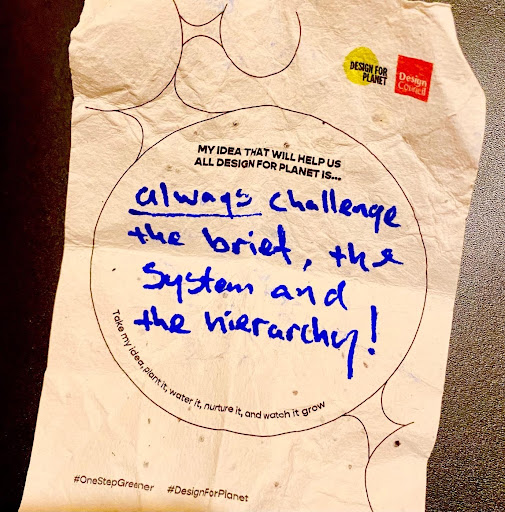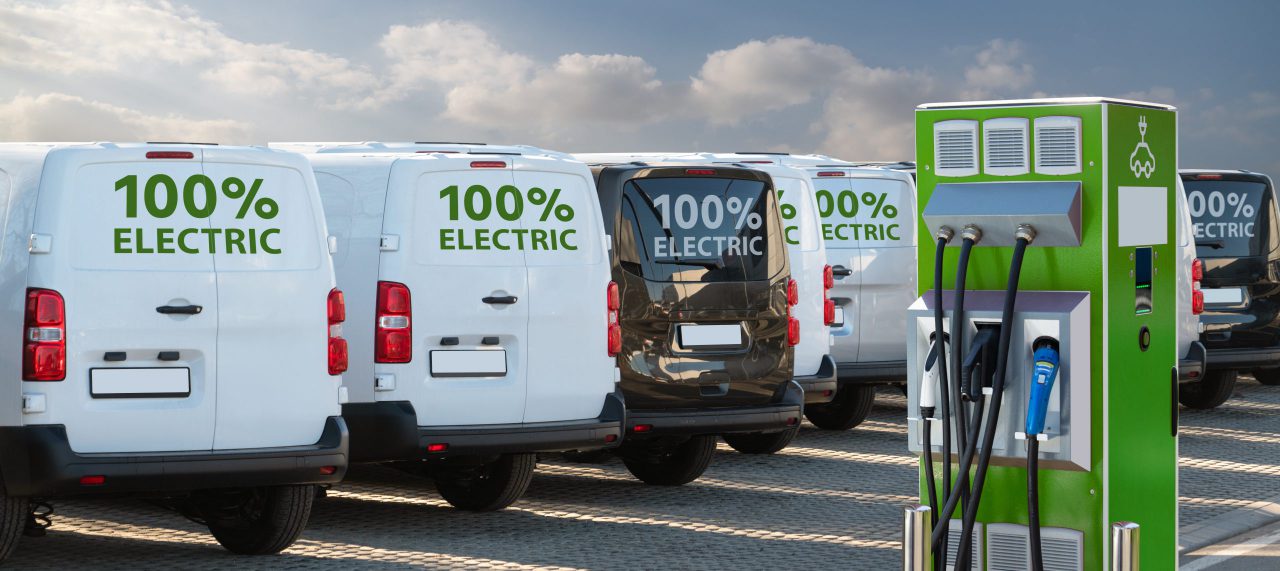Innovating for the Planet: reflections on the Design for Planet festival

Dr Abigail Hird, KTN's Interim Head of Design, shares the key thoughts and lessons learnt about sustainability and design from attending the Design for Planet festival.
This past week, leaders from across the world have landed in Glasgow (my home city) for Conference Of the Parties 26 (COP26) to discuss and hopefully agree on actions to mitigate against climate change.
Whilst those with governing power were negotiating, pontificating, and dialling down, the design community from across the UK (and globally) got together virtually and in person in the V&A Dundee in the only UK UNESCO City of Design to discuss what we can do to take responsibility for the part design has played in our resource hungry trajectory to the climate crisis. Facilitated by The Design Council, we explored the positive power of design and how the role and substance of design must change.
To develop better innovations and create a positive impact, KTN’s Design Innovation Network creates a forum for asking challenging questions as people develop new technologies. I’ve been inspired over the last few days and have come away with new personal convictions and a fresh motivation to ensure that we push our Innovators to consider “are you doing the right thing?” as well as “are you doing things right?”
The impact and power of sustainable design is not new news
Design decision making locks in around 80% of product cost and 80% of environmental impact.
Net Zero by 2050 is not enough to prevent devastation and suffering. Neither is a 1.5-degree rise in average temperature low enough to prevent extensive loss of land, homes, communities, and livelihoods. The cumulative carbon emissions over the next few years will store up extra pressures for future generations and will contribute further to a current crisis.
Design is ubiquitous across carbon-emitting systems: from food production to transportation, data generating systems, to consumables and desire-driven purchases.
As well as being a contributor to the climate crisis, design holds huge powerful potential to drive positive change.

So, what can we do?
In short: lots. Having attended the Design for Planet festival, here are immediate thoughts from the past few days.
Thought One
This first point is practical. Whether you are a designer, or an innovator push back on the brief. Ask challenging questions. Such as:
- Do we really need this?
- Could we do this in a way that regenerates the planet?
- What unintended consequences might there be?
- What other systems and infrastructure is required to make this solution circular?
The earlier in the process these questions can be addressed, the better. Leyla Acaroglu’s energising talk at the end of Day One brought this home.
Thought Two
The importance of understanding unintended consequences and the wider system entangled with your solution cannot be overstated. Indy Johar and Sowmya Parthasarath both spoke to the complexity of the challenge and the need for better understanding. The systemic approach to understanding current and future states stretches current design practice.
My own background is in Systems Engineering. Systems Engineering (a design approach traditionally used by the likes of NASA and the defence sector) includes comprehensive modelling methods that allow interactions and interdependencies to be mapped out and explored. Systems Engineering also emphasises really understanding the requirements. This approach to design involves invested time upfront and requires new, patient ways of thinking about project delivery.
Thought Three
We need to find ways to be strategic about our technology developments. For example, instead of replacing petrol cars like-for-like with electric vehicles or being blind to the energy consumption of data storage, let’s push to evoke real disruptive systems-level change. How can we be hyper aware (and help users be aware) of the true impact of ‘green’ technologies? Payal Arora shared how we can learn from the global south who have, through necessity, developed elegant frugality. Joe McLeod shared his game-changing insights on creating endings – a massively under considered aspect of product development.
Thought Four
Think about changing the basis of decision making so we look beyond economic growth and consider Future Generations. This theme came up repeatedly, from the conference launch to the closing keynote. Kate Raworth opened with Donut Economics and the message that economic growth is simply unsustainable. We need to find new paradigms for growth: future health, biodiversity, and the richness of life. Dr. Jane Davidson shared hugely inspiring insights from the ground-breaking, first-of-its-kind Welsh Future Generations bill.
Thought Five
It’s okay to be angry and frustrated, but we can also hold gentle conversations if we are to find solutions and make progress. Invite others to share their thoughts and experiences, ask and allow safe space for naive questions, understand the worries and concerns of others, and slowly and considerately show alternatives. By building community, we’ll affect real change. Jonathan Wise gave a great talk from an advertising perspective which really brought this to light. Sarah Drummond closed the conference with a seed bomb swap of commitments. I picked up a great one which I intend to keep – I’d love to know who wrote it. (See the main image).
Thought Six
I am excited to find more opportunities to reuse and repair in everyday life. Although both my shirts were from charity shops, I felt very conscious of my brand-new jumper and my meat-eating ways. Through gentle conversation and deeper exploration of the need for a new perspective corporately, there has been a mindset change for me personally. Professionally, considering the systemic impacts of innovation and design has always been my passion but now my personal choices are going to be much more carefully considered too.
Call to action
If you are keen to join a community of people who are passionate about finding ways to use design and systems thinking to deliver better innovation, please get in touch or sign up to the Design Innovation Network. We look forward to welcoming you!



